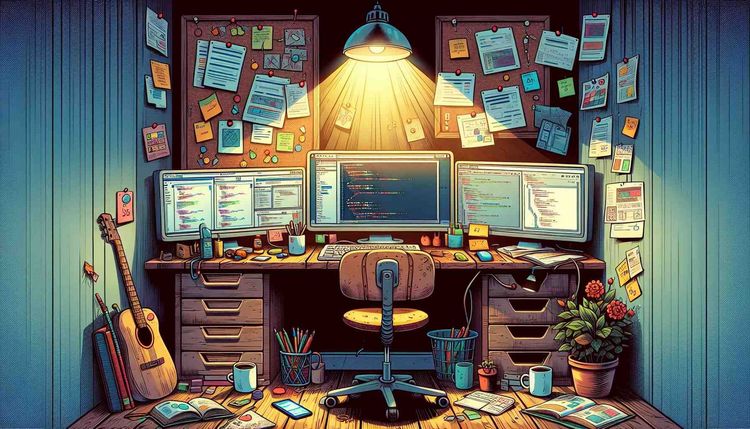Best Practices for Using Boilerplates in Web Development
 Paul Therbieo
Paul Therbieo
Table of Contents
- Understanding Boilerplates
- Benefits of Using Boilerplates
- Choosing the Right Boilerplate
- Popular Boilerplate Options
- Customizing Boilerplates
- Best Practices for Boilerplate Usage
- Common Pitfalls to Avoid
- Wrap-up
- FAQ
Understanding Boilerplates
Boilerplates are pre-written code templates that developers use to kickstart their projects. They're like a head start in a race, giving you a foundation to build upon. In web development, boilerplates can range from simple HTML structures to complex frameworks with built-in features.
Let's break down what typically comes in a boilerplate:
- Basic project structure
- Configuration files
- Common libraries and dependencies
- Starter code for essential features
Benefits of Using Boilerplates
Using boilerplates can significantly speed up your development process. Here's why they're worth considering:
| Benefit | Impact |
|---|---|
| Time Savings | Up to 50% faster project setup |
| Consistency | Standardized code across projects |
| Best Practices | Built-in industry standards |
Time is money in web development, and boilerplates help you save both. By starting with a solid foundation, you can focus on building unique features instead of reinventing the wheel.
Choosing the Right Boilerplate
Selecting the right boilerplate is crucial. It's like picking the right tool for a job. Here's what to consider:
- Project requirements
- Tech stack compatibility
- Community support and updates
- Customization options
For instance, if you're working with Next.js, you might want to look for a nextjs starter template that aligns with your project goals. BoilerplateHub.com offers a variety of nextjs templates to choose from, making it easier to find the perfect fit for your needs.
Popular Boilerplate Options
Let's look at some popular boilerplate options available:
ShipFast
ShipFast is a comprehensive NextJS boilerplate designed for building SaaS, AI tools, and web applications. It includes:
- SEO optimization
- Email integration
- Stripe payment processing
- Authentication system
- Database setup
You can find more details about ShipFast at https://shipfa.st/.
LaunchFast
LaunchFast offers starter kits for multiple frameworks, including Astro, Next.js, and SvelteKit. Its features include:
- SEO tools
- Analytics integration
- Database setup
- Authentication
- Payment processing (Stripe and Lemon Squeezy)
Check out LaunchFast at https://launchfa.st/ for more information.
Customizing Boilerplates
While boilerplates provide a great starting point, you'll often need to customize them to fit your specific needs. Here's how to approach customization:
- Understand the boilerplate structure
- Identify areas that need modification
- Make incremental changes
- Document your customizations
Remember, the goal is to enhance, not overhaul. Excessive customization can negate the benefits of using a boilerplate in the first place.
Best Practices for Boilerplate Usage
To get the most out of boilerplates, follow these best practices:
| Practice | Benefit |
|---|---|
| Regular updates | Stay current with latest features and security patches |
| Understand the code | Easier maintenance and customization |
| Contribute back | Improve the boilerplate for the community |
By following these practices, you'll maximize the value you get from your chosen boilerplate while contributing to the broader development community.
Common Pitfalls to Avoid
While boilerplates are incredibly useful, there are some common mistakes to watch out for:
- Over-reliance on boilerplate code
- Neglecting to update dependencies
- Ignoring documentation
- Choosing overly complex boilerplates for simple projects
Avoiding these pitfalls will help you use boilerplates effectively without compromising your project's integrity or performance.
Wrap-up
Boilerplates are powerful tools in web development, offering significant time savings and promoting best practices. Whether you're looking for a nextjs template or a more comprehensive solution, platforms like BoilerplateHub.com provide a wide range of options to suit various project needs.
By choosing the right boilerplate, customizing it thoughtfully, and following best practices, you can dramatically improve your development workflow. Remember, the key is to use boilerplates as a starting point, not a crutch.
FAQ
Q: Are boilerplates suitable for beginners?
A: Yes, boilerplates can be great learning tools for beginners, providing insight into project structure and best practices.
Q: How often should I update my boilerplate?
A: It's a good practice to check for updates regularly, at least once a month or before starting a new project.
Q: Can I use multiple boilerplates in one project?
A: While possible, it's generally not recommended as it can lead to conflicts and unnecessary complexity. It's better to choose one comprehensive boilerplate that meets most of your needs.
Q: Where can I find reliable boilerplates?
A: BoilerplateHub.com is a great resource for finding curated, high-quality boilerplates across various tech stacks and project types.
